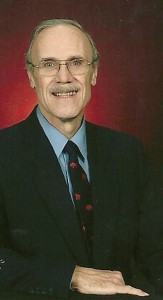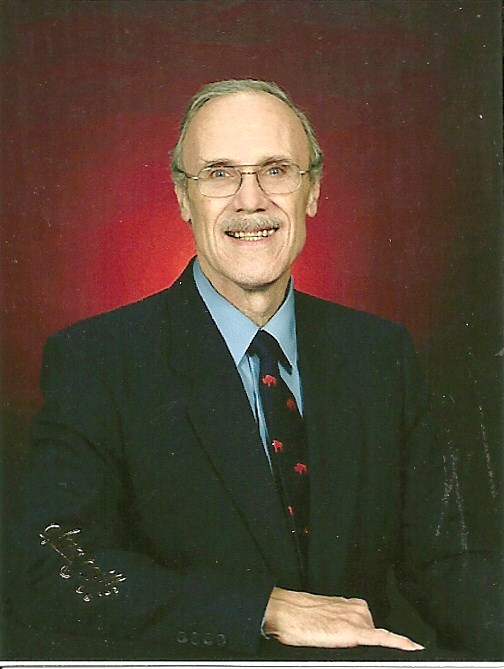SAMUEL WILLIAM LEWIS CORBIN, CLASS OF 1962
 The chain of events that finally led to graduation in Physics at Kenyon College most probably goes back to my affiliation with the Episcopal Church in Worthington, a quiet community of just over 2,000 people located nine miles north of Columbus, Ohio. Our local minister, Rev. Tom Gifford, was wonderful with young people, and he was among the first to spark my interest in natural science when, during an interview, he demonstrated the mysterious force of gravity by holding aloft his set of car keys and letting them drop to his desk.
The chain of events that finally led to graduation in Physics at Kenyon College most probably goes back to my affiliation with the Episcopal Church in Worthington, a quiet community of just over 2,000 people located nine miles north of Columbus, Ohio. Our local minister, Rev. Tom Gifford, was wonderful with young people, and he was among the first to spark my interest in natural science when, during an interview, he demonstrated the mysterious force of gravity by holding aloft his set of car keys and letting them drop to his desk.
There is a further connection between Worthington and Kenyon. I am told that Kenyon had its origins in Worthington, just a quick commute from the Philander Chase farmstead, but when the city of Columbus won the referendum to become the new state capital, Bishop Chase envisioned the growth of a large city with its associated crime and corruption, and so relocated the college to its presently serene setting. What a great decision that was! I couldn’t imagine a finer setting for a place of study, complete with its old English architecture and world-wide scholastic expertise.
The three members of the Kenyon faculty that influenced me the most were Professor Norton in chemistry, Professor Daniel Finkbeiner in mathematics and Professor Franklin Miller in physics. I was especially drawn to Dr. Miller, whom I admired for his moral decision not to take part in the Manhattan Project during World War II. He was a great teacher, and I never had difficulty remembering the wavelength of the sodium-D spectral line in Angstrom units because he had it conveniently printed on his auto license plates.
It’s amazing how times have changed. Our “computer” was a bulky Monroe calculating machine that not only could add and subtract but could even multiply and divide! Also memorable were reenactments of famous experiments of discovery, such as the Millikan oil-drop experiment, in which one could actually measure the electric charge on a single electron.
In the realm of sports, I took a liking toward individual sports more than toward team sports. As we have later seen with Forrest Gump, it seemed that wherever I went, I ran rather than walked, and so it seemed natural to participate in track and field during the Freshman year as Kenyon inaugurated its first track team since the original one disbanded decades earlier. The importance of physical exercise and the concepts of good sportsmanship were further implemented by swimming under coach Tom Edwards. It was an honor and a great challenge to swim with individuals who helped Kenyon on its way to national prominence in that sport. The size and wonder of today’s Kenyon Athletic Center are gratifying reminders of the old concept of having a sound body as well as a sound mind.
Graduation day was Sunday, June 3, 1962, and by 3:00 P. M., the weather was simply divine as the bright sun filtered through the green leaves of spring onto the large gathering of all of us in front of Mather Hall. The radiant warmth of the air was graced with triumphant chords resounding of a Baldwin grand piano that had been wheeled outdoors and played by Professor Paul Schwartz. I especially well remember the words of our honored guest speaker, Mr. James Reston of the New York Times, who stressed the importance of being an active participant in the processes that continually shape our destiny.
After Kenyon, I entered graduate studies in oceanography at the University of Washington, but as my military draft status changed from 2-S to 1-A, I voluntarily joined the Navy in 1964 and became a line officer in the Pacific fleet. Serving aboard the U. S. S. Bellatrix, a refrigerator ship, we engaged in underway support operations for the fleet engaged in the Viet Nam conflict. By 1968, I ventured northward to Alaska, where I completed a master’s degree in geology at the University of Alaska. The mosquitos surely lived up to their reputation as the unofficial Alaska state bird!
Upon my returning to the “Lower 48” in 1972, I took a position as geophysicist with the U. S. Naval Oceanographic Office and served aboard various surveying vessels engaged in charting the earth’s gravity field and ocean bottom topography.
Meanwhile I had purchased 160 acres in British Columbia, and by 1977, I built a small 5-sided cabin and spent some of my best years along with a few friendly neighbors in the wilderness setting. Even while working toward a doctorate degree in geology from 1983 to 1988 at the University of Oregon, I frequently traveled back and forth to visit. Once again, Alaska called, and in 1988 I moved to the Aleutian Islands, and I took a part-time faculty position at a field station for the University of Alaska located in the Aleutian fishing port of Unalaska. There, I also taught English as a second language, coordinated the examination program for the high school equivalency diploma, and served as the weather observer for the local airport.
From 1992 on, the Berkshire region of Massachusetts became my home. I bought an old house built around 1810 and financed it largely by working at a local horse farm which specialized in Icelandic breeds. During these years, I also directed much time and energy toward maintaining the family summer residence located on a lake in southern Ontario. Having sold my house, the last few years have afforded me a couple extended trips to Spain, Portugal, Great Britain, and all across North America.
As long as I can remember, my main hobby has been drawing and painting pictures, mostly buildings and natural landscapes. Also, I have thoroughly enjoyed playing the piano, mainly classical. I was immediately drawn to the music of Bach, Handel, and Beethoven, and Recently, I have joined the choir at the local Congregational church and every year, I join the community chorus for the performance of Frederick Handel’s “The Messiah”.
Thinking back over the years, the college has been a stikingly peaceful place, a beacon overlooking a safe and quiet harbor, where one has the chance to prepare his modest sailing vessel for the voyage beyond the light house, a journey along the mighty river of life where calmness is punctuated by rapid twists and turns, all leading inexorably to the Great Waters that go forever beyond.

